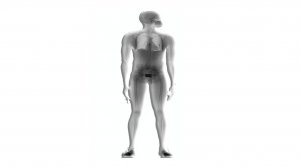Scanners to combat diamond theft at Debswana mines


DIAMOND DIGESTION Scannex is a full-body scanner with a low X-ray radiation dose that allows for quick scan time
Botswana-based diamond mining company Debswana plans to soon start the R42.7-million installation of ten upright, full-body Scannex X-ray scanners at four of its diamond mines in Botswana.
Four scanners will be installed at security checkpoints at Jwaneng, four at Orapa and one each at the Letlhakane and Damtshaa mines.
“We are regulated by two government bodies – the Radiation Protection Inspectorate (RPI) and the Department of Environmental Affairs (DEA). Debswana has received approval from the RPI and we are awaiting approval from the DEA. Once Debswana receives approval from the DEA, we will start the installation process,” Debswana corporate affairs manager Rachel Lungile Mothibatsela tells Mining Weekly.
She explains that the decision to install the scanners was motivated by suspicions of diamond theft.
“It is difficult to establish the precise quantity and value of the diamonds stolen from our mines, owing to the low detection rate of our current search methods. However, we believe it is highly probable that most diamonds stolen from Debswana mines go undetected.”
Mothibatsela says the current physical and strip-search methods are inefficient, particularly if diamonds are hidden within the human body, which makes it difficult to detect them using current methods.
According to Debswana, 36% of the workers smuggle diamonds out of its mines by hiding them in the anus, 30% hide them between their buttocks, 14% use their socks and hair, 5% conceal the gems in their mouths, 2% place the gems under their scrotum, 2% hide them in their clothes, 2% use their underwear and 10% use other means.
“We have recorded instances where persons have been caught and/or arrested and, eventually, prosecuted before the magistrates courts in Botswana. Invariably, employees are used as conduits by opportunistic unorganised and organised criminal syndicates, which are happy to make a living out of diamond theft,” says Mothibatsela.
She highlights that such criminal elements provide capital for infiltrating Debswana mining operations and coercing mine employees into working with them.
Meanwhile, Mothibatsela notes that the Scannex has a low X-ray radiation dose that allows for quick scan time. Its operations are fully automated and X-rays are automatically turned off should any error occur. Each machine has a built-in dose area product, or DAP, meter that measures the X-ray dose whenever a scan takes place.
The Scannex’s dose limit is one millisievert per year (mSv/y) per individual, which is in line with the International Commission on Radiology Protection limit of one millisievert per year for members of the public.
Mothibatsela points out that this limit is significantly below the international limit for workers exposed to radiation, such as radiographers and technicians, for whom the limit is 20 mSv/y.
She adds that an independent company performs the X-ray dosage management function, thereby providing third-party assurance.
Diamond miner De Beers’ research and development wing, DebTech, originally developed the scanner technology in the 1990s to prevent diamond theft at De Beers’ operations.
Meanwhile, according to Sandton-based medical equipment manufacturer Lodox Systems’ website, an “innovative team” of engineers at De Beers’ diamond research laboratories realised that the scanner would be of “immense benefit” in the world of medicine, particularly for emergency and trauma centres. Lodox Systems was subsequently formed in 2002 to further develop the technology for medical use and encourage its sale and distribution globally.
In September 2013, Engineering News reported that the Lodox Statscan scanner was described during season nine of the popular US medical drama series Grey’s Anatomy as “the most cutting-edge tool in diagnostic technology”.
As the only X-ray imaging system in the world that can produce a full-body image, the Lodox scanner takes only 13 seconds to produce an accurate full-body overview of injuries and foreign bodies in a patient. It takes only 16 seconds to produce a lateral scan, compared with a conventional X-ray machine, which requires up to 30 minutes and various individual X-rays to compile a full-body image.
Comments
Press Office
Announcements
What's On
Subscribe to improve your user experience...
Option 1 (equivalent of R125 a month):
Receive a weekly copy of Creamer Media's Engineering News & Mining Weekly magazine
(print copy for those in South Africa and e-magazine for those outside of South Africa)
Receive daily email newsletters
Access to full search results
Access archive of magazine back copies
Access to Projects in Progress
Access to ONE Research Report of your choice in PDF format
Option 2 (equivalent of R375 a month):
All benefits from Option 1
PLUS
Access to Creamer Media's Research Channel Africa for ALL Research Reports, in PDF format, on various industrial and mining sectors
including Electricity; Water; Energy Transition; Hydrogen; Roads, Rail and Ports; Coal; Gold; Platinum; Battery Metals; etc.
Already a subscriber?
Forgotten your password?
Receive weekly copy of Creamer Media's Engineering News & Mining Weekly magazine (print copy for those in South Africa and e-magazine for those outside of South Africa)
➕
Recieve daily email newsletters
➕
Access to full search results
➕
Access archive of magazine back copies
➕
Access to Projects in Progress
➕
Access to ONE Research Report of your choice in PDF format
RESEARCH CHANNEL AFRICA
R4500 (equivalent of R375 a month)
SUBSCRIBEAll benefits from Option 1
➕
Access to Creamer Media's Research Channel Africa for ALL Research Reports on various industrial and mining sectors, in PDF format, including on:
Electricity
➕
Water
➕
Energy Transition
➕
Hydrogen
➕
Roads, Rail and Ports
➕
Coal
➕
Gold
➕
Platinum
➕
Battery Metals
➕
etc.
Receive all benefits from Option 1 or Option 2 delivered to numerous people at your company
➕
Multiple User names and Passwords for simultaneous log-ins
➕
Intranet integration access to all in your organisation



















